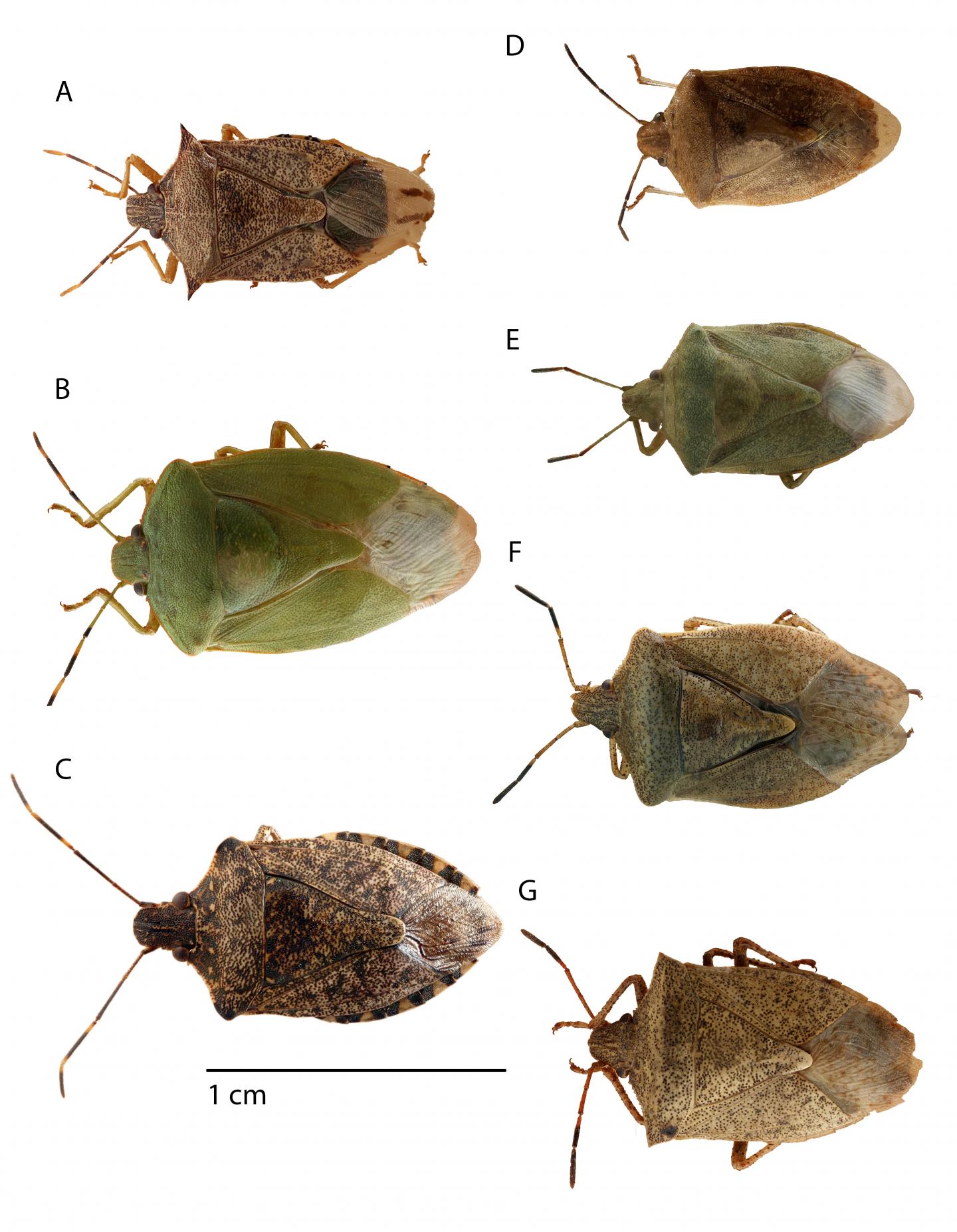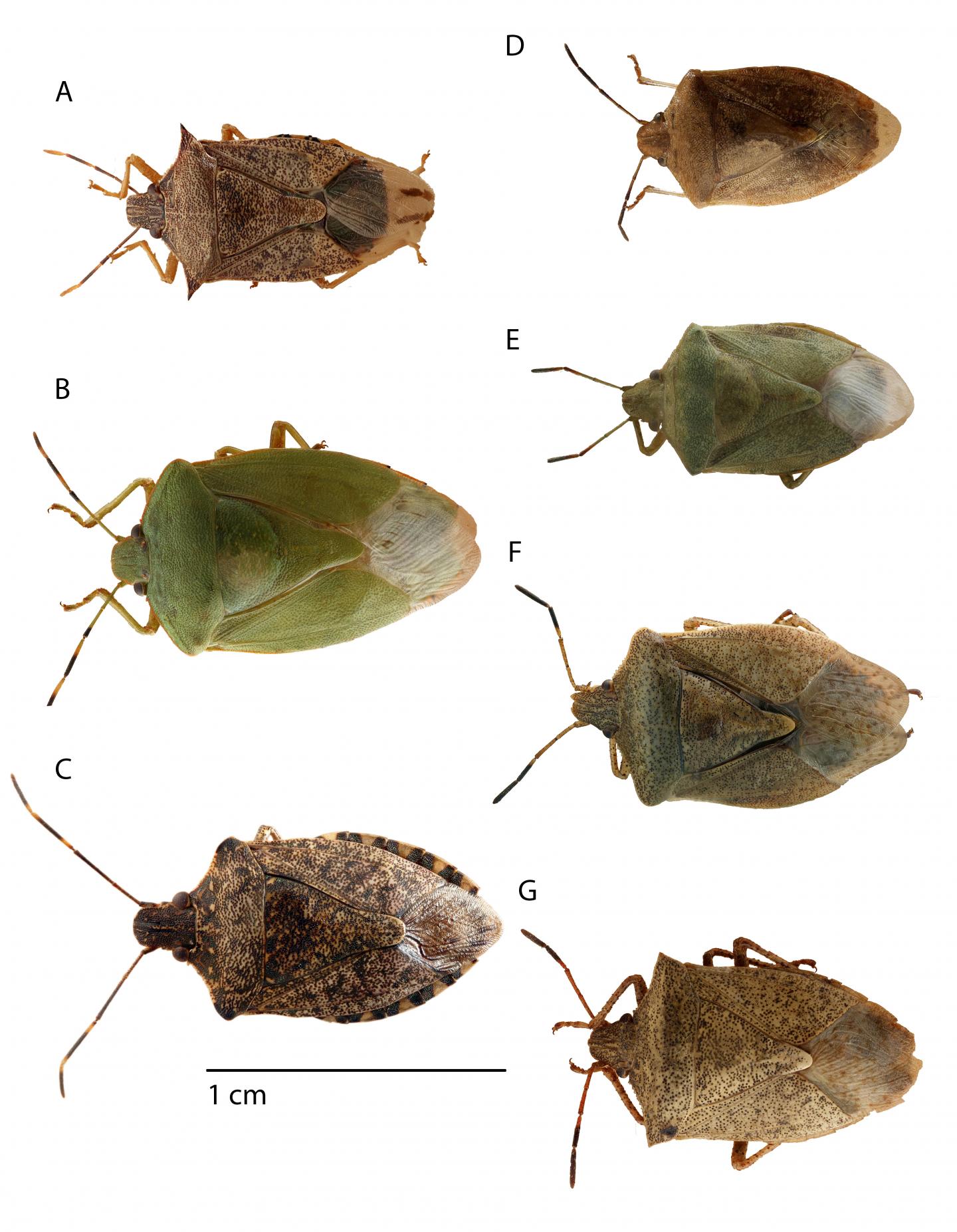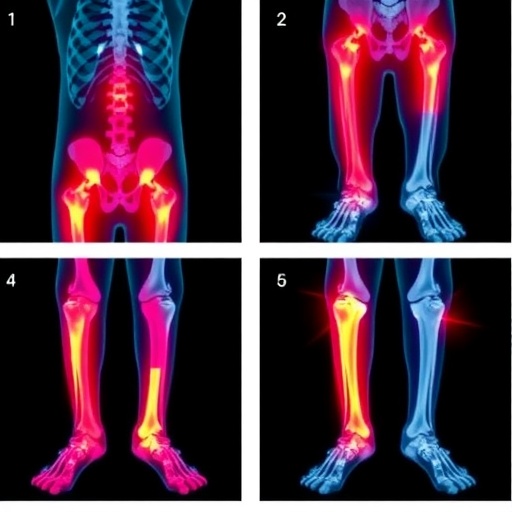
Credit: Photo credits: Cassandra Kurtz and Christopher Philips, modified by Daniela Pezzini
Annapolis, MD; April 28, 2017 — Farmers in the midwestern United States have been battling increasing infestations from a variety of stink bug species in recent years, and now they have a new free resource for understanding and managing the emerging pests.
Next week, the Entomological Society of America's open-access Journal of Integrated Pest Management (JIPM) will publish "Identification, Biology, Impacts, and Management of Stink Bugs (Hemiptera: Heteroptera: Pentatomidae) of Soybean and Corn in the Midwestern United States," a profile of several of the most common stink bug pests that offers methods for differentiating species, summaries of stink bug life cycles and behaviors, and guidance for monitoring and managing them.
Stink bugs have historically been more prevalent pests in the southern United States, but they are now making more frequent appearances in midwestern fields, according to Robert Koch, Ph.D., assistant professor and extension entomologist at the University of Minnesota and lead author of the JIPM article. "Because stink bugs are emerging as a new threat to Midwest soybean and corn production, we felt that there was need for a comprehensive review of these pests that was accessible to producers and agricultural professionals," he says.
Koch and co-authors conducted an extensive review of existing research on management of stink bugs in developing the new profile aimed at midwestern growers. While "at least 24 species or subspecies of stink bugs could potentially be encountered in soybean and corn in the midwestern United States," the most common pest species are outlined in the article, including:
- Green sting bug (Chinavia hilaris)
- Brown marmorated sting bug (Halyomorpha halys)
- Redshouldered sting bug (Thyanta custator acerra)
- Brown sting bug (Euschistus servus)
- Onespotted sting bug (Euschistus variolarius)
In soybean, stink bugs can feed on all above-ground parts of the plant but prefer pods and developing seeds, and the damage they cause can affect yield, seed quality, and germination rates. In corn, stink bugs can feed on corn at all growth stages, but seedling and early reproductive stages of corn are most susceptible.
Koch and colleagues specify scouting methods for measuring stink bug abundance in fields, along with economic thresholds at which management tactics should be deployed. Their research identifies which classes of insecticides may be best suited for individual species and identify additional resources for growers to investigate cultural and biological control measures, as well.
"Stink bugs tend to be generalist pests and can feed on and move between different crops and wild plant species throughout the year," says Koch. The JIPM profile rounds up existing knowledge about stink bugs, much of it from research conducted in southern states, but "further research is needed on corn and soybean response to stink bug feeding in the Midwest," he says.
###
"Identification, Biology, Impacts, and Management of Stink Bugs (Hemiptera: Heteroptera: Pentatomidae) of Soybean and Corn in the Midwestern United States," by Robert L. Koch, Daniela T. Pezzini, Andrew P. Michel, and Thomas E. Hunt, will be published online on May 4 in the Journal of Integrated Pest Management. Journalists may request advance copies of the article via the contact below.
CONTACT: Joe Rominiecki, [email protected], 301-731-4535 x3009
ABOUT: ESA is the largest organization in the world serving the professional and scientific needs of entomologists and people in related disciplines. Founded in 1889, ESA today has over 6,000 members affiliated with educational institutions, health agencies, private industry, and government. Headquartered in Annapolis, Maryland, the Society stands ready as a non-partisan scientific and educational resource for all insect-related topics. For more information, visit http://www.entsoc.org.
Journal of Integrated Pest Management is an open access, peer-reviewed, extension journal covering the field of integrated pest management. The journal is multi-disciplinary in scope, publishing articles in all pest management disciplines, including entomology, nematology, plant pathology, weed science, and other subject areas. For more information, visit https://academic.oup.com/jipm, or visit https://academic.oup.com/insect-science to view the full portfolio of ESA journals and publications.
Media Contact
Joe Rominiecki
[email protected]
301-731-4535 x3009
@EntsocAmerica
http://www.entsoc.org
############
Story Source: Materials provided by Scienmag





